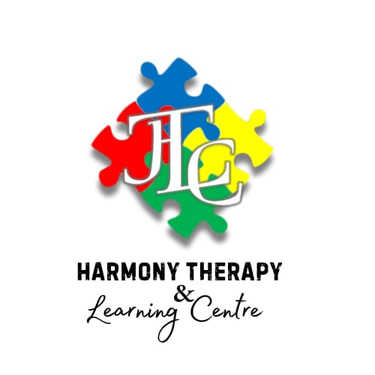Navigating the Spectrum: A Progressive Journey to Understanding Autism
2/23/20255 min read


Introduction to Autism Spectrum Disorder
Autism Spectrum Disorder (ASD) is a complex neurodevelopmental condition characterized by a range of behavioral, social, and communication challenges. The term "spectrum" reflects the wide array of symptoms and their severity, indicating that individuals with autism may experience differing levels of ability and disability. This variability presents in various forms, influencing the way individuals interact with the world around them. Understanding this spectrum is essential for fostering an inclusive environment that caters effectively to diverse needs.
Myths and misconceptions surrounding autism frequently create barriers to effective understanding and support. For example, one common myth is that individuals with autism lack the ability to form relationships. In reality, while autism may affect social communication, many people with the disorder desire social connections and have the capacity for deep relationships. Additionally, another misconception is that autism is solely a childhood disorder. However, ASD can persist throughout a person’s life, with adults also needing access to tailored support systems.
Early detection and intervention are crucial components in the management of autism. Recognizing symptoms as soon as possible increases the likelihood of effective support, allowing individuals to develop essential skills, improve communication, and navigate daily challenges. Standardized screening processes and observational measures can significantly enhance early diagnosis, providing families with the resources they need to facilitate the best developmental outcomes for their children.
The importance of addressing these misconceptions and acknowledging the neurological diversity of individuals diagnosed with ASD cannot be overstated. As society becomes more informed, the focus can shift towards accommodating individual differences rather than stigmatizing them. A solid understanding of autism paves the way for broader discussions about the impact this spectrum has on those affected and the various strategies that can be employed to support them on their journey.
The Evolving Understanding of Autism
The perception and understanding of autism have undergone significant transformation throughout history. Initially, autism was often misunderstood and misdiagnosed, frequently attributed to parenting styles, particularly the "refrigerator mother" theory, which posited that cold and detached parenting led to the condition. This notion not only stigmatized parents but also marginalized individuals on the spectrum, reflecting the limited understanding of autism within society.
As research progressed, particularly in the latter half of the 20th century, pivotal milestones marked the evolution of autism studies. In 1943, Dr. Leo Kanner published his groundbreaking paper that introduced "early infantile autism," providing a clinical description that distinguished it from other disorders. Shortly thereafter, in the 1960s, Dr. Bernard Rimland emerged as a leading advocate, promoting research focused on the genetic and neurological underpinnings of autism, which helped shift the narrative from blame to understanding.
The 1980s and 1990s saw further advancements, particularly with the introduction of the autism spectrum concept. This new framework acknowledged that autism is a diverse spectrum, encompassing a wide range of abilities and challenges. This understanding paved the way for the acceptance of neurodiversity, recognizing that variations in neurological development should be viewed as natural human differences rather than deficits.
Influential figures, such as Dr. Temple Grandin, have played vital roles in raising awareness and fostering respect for autistic individuals. Their work highlights the unique perspectives and contributions that those on the spectrum can offer to society. Furthermore, the evolution of language surrounding autism reflects this changing perspective; terms like "autistic" are embraced by many individuals as part of their identity, encouraging a more respectful and informed dialogue.
Today, the focus continues to shift towards promoting acceptance and support for individuals with autism, recognizing their unique abilities and fostering an environment rich in understanding and compassion.
Understanding the Individual Experience of Autism
Autism Spectrum Disorder (ASD) presents itself in myriad ways, encapsulating a wide range of experiences among individuals on the spectrum. Each person's experience is unique, shaped by various factors such as sensory processing, communication styles, and the interplay of their strengths and challenges. For many individuals with autism, sensory sensitivity can deeply influence their daily interactions and environments. Commonly, noises, lights, or textures that may seem ordinary to others can create overwhelming discomfort. Consequently, understanding sensory processing is essential in supporting those on the spectrum, highlighting the need for tailored environments that reduce sensory overload.
Communication styles vary significantly among individuals with autism. Some may be nonverbal or have limited verbal abilities, while others may communicate effectively but struggle with social nuances. For instance, individuals who are nonverbal might use alternative communication methods, such as picture exchange systems or assistive technology. Alternatively, those who are verbal might excel in certain areas but face challenges in recognizing nonverbal cues. Such variations underscore the necessity for adaptive communication strategies that cater to the differing needs of individuals with ASD, fostering more inclusive and meaningful interactions.
Moreover, while individuals on the autism spectrum may encounter challenges, they also often possess unique strengths that deserve recognition. Many exhibit exceptional focus and attention to detail in areas of interest, which can lead to remarkable accomplishments in fields such as technology, art, and mathematics. These strengths highlight the importance of personalized support that capitalizes on individual talents while addressing specific challenges faced by those with autism. By incorporating diverse perspectives—including those from parents, educators, and individuals on the spectrum—an enriched understanding of autism emerges, emphasizing the complexity and richness of the individual experiences within this diverse community. Personalized approaches to support are crucial in nurturing the potential of each person on the spectrum.
Practical Strategies for Support and Advocacy
Supporting individuals with autism requires a multifaceted approach involving effective communication techniques, inclusive educational practices, and the utilization of community resources. To foster an environment that promotes understanding, it is essential for parents, educators, and advocates to be well-informed and engaged in the process.
Effective communication is fundamental in interactions with individuals on the autism spectrum. Utilizing clear, simple language is key, as individuals with autism may struggle to understand complex vocabulary or abstract concepts. Non-verbal communication methods, such as visual aids, social stories, and pictorial schedules, can also enhance understanding. Furthermore, recognizing and adapting to each individual's unique communication preferences fosters a more inclusive environment.
Inclusive education practices play an essential role in supporting students with autism. Implementing Individualized Education Programs (IEPs) that are tailored to meet each child’s specific needs is vital. These plans should focus on academic growth as well as social and emotional development. Utilizing differentiated instruction and providing opportunities for peer interaction can also promote a positive educational experience, allowing students with autism to thrive alongside their peers.
Moreover, access to community resources can significantly aid families and individuals with autism. Local organizations often offer support services, workshops, and social activities that help build a sense of community and belonging. By leveraging these resources, families can gain valuable insights and a network of support, enhancing their overall experience.
Finally, advocacy and awareness are crucial components in the journey toward autism acceptance. Engaging in open discussions, attending community events, and supporting autism awareness campaigns can help dispel myths and promote a better understanding of the autism spectrum. By becoming informed advocates, parents and educators can contribute to a society that values acceptance, ensuring that individuals with autism are supported throughout their lives.
Empowering children with diverse learning needs.
info@harmonytherapyandlearning.com
+1-876-835-8403
© 2025. All rights reserved.
